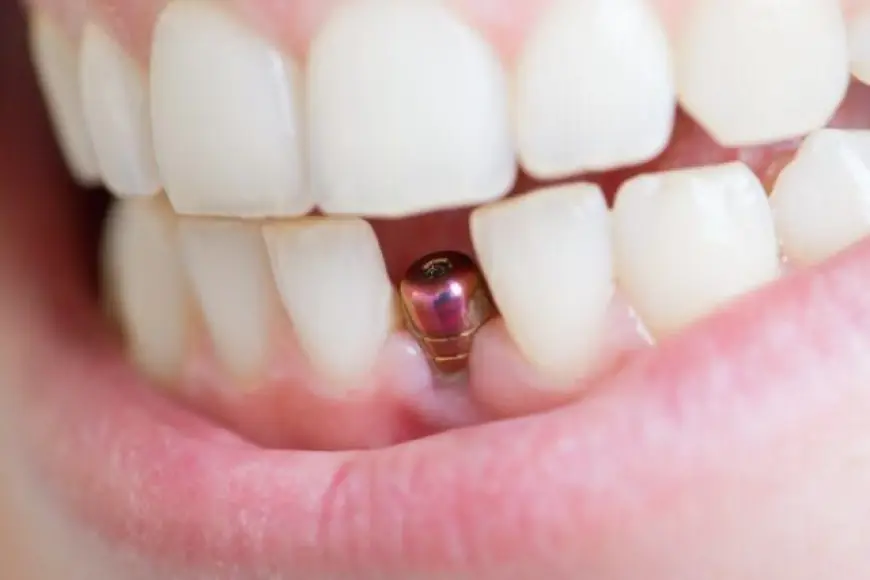How Dental Implants Are Revolutionizing Tooth Replacement
Do you have a missing tooth? Do you want to get it replaced with an implant? We've got you covered. Read to learn more about Dental Implants in Dubai, Abu Dhabi.

Dental implants have transformed the world of dentistry and tooth replacement, offering a durable, aesthetic, and long-lasting solution to those who have lost teeth due to injury, decay, or disease. The development of dental implants has marked a turning point in restorative dentistry, allowing patients to regain not only their smile but also their confidence and functionality. This article delves into the advancements, benefits, and impact of dental implants on modern tooth replacement.
What Are Dental Implants?
Dental implants are artificial tooth roots made from biocompatible materials, typically titanium, that are surgically placed into the jawbone. Once the implant is placed and has fused with the bone, a crown, bridge, or denture can be attached to restore the function and appearance of a missing tooth. Unlike traditional dentures or bridges, Dental Implants Dubai offer a permanent and highly effective solution to tooth loss.
The Evolution of Tooth Replacement:
For centuries, individuals with missing teeth have struggled with temporary or uncomfortable solutions. In the past, dentures and bridges were the go-to treatments for tooth replacement. While these options offered some improvement in terms of appearance and function, they often came with drawbacks such as discomfort, instability, and the need for frequent maintenance.
The advent of dental implants in the 20th century revolutionized tooth replacement, providing a solution that mimics the natural tooth structure. Dr. Per-Ingvar Brånemark, a Swedish orthopedic surgeon, is credited with discovering the process of osseointegration, the process by which titanium bonds with bone, leading to the development of modern dental implants. Since then, advancements in materials, techniques, and technology have improved the success rates and efficiency of dental implants.
Advantages of Dental Implants:
Natural-Looking and Functional:
One of the most significant advantages of dental implants is their ability to blend seamlessly with natural teeth. The implant itself is made to match the size, shape, and color of the surrounding teeth, giving patients a confident, natural-looking smile. Moreover, dental implants function just like real teeth, enabling patients to chew, speak, and smile without any discomfort or self-consciousness.
Durability and Longevity:
Dental implants are known for their incredible durability. With proper care, implants can last a lifetime, making them an investment in long-term oral health. Unlike bridges or dentures, which may need to be replaced every few years, dental implants can withstand the daily wear and tear of chewing and speaking without losing their functionality.
Preservation of Jawbone Health:
When a tooth is lost, the underlying jawbone can begin to deteriorate over time due to the lack of stimulation from the tooth's root. This bone loss can lead to changes in facial structure and the need for additional dental procedures in the future. Dental implants help preserve the jawbone by mimicking the function of natural tooth roots. The implant stimulates the bone, preventing atrophy and maintaining the integrity of the jaw.
No Impact on Adjacent Teeth:
Traditional bridges often require the filing down of adjacent healthy teeth in order to anchor the bridge in place. This can compromise the health of surrounding teeth and may lead to further dental issues. With dental implants, the surrounding teeth remain untouched, as the implant stands independently in the jaw. This means that adjacent teeth remain intact, preserving their health and structure.
The Implant Procedure:
The dental implant procedure typically involves several steps, though the process can vary depending on individual cases. Here’s an overview of the general steps involved:
-
Initial Consultation:
During the first visit, the dentist or oral surgeon will evaluate the patient's oral health, including the condition of the jawbone, gums, and remaining teeth. X-rays and 3D scans may be taken to assess bone density and determine the best approach for the implant placement. -
Surgical Placement of the Implant:
The next step involves placing the dental implant into the jawbone. The procedure is typically done under local anesthesia, and in some cases, sedation may be used. The implant is carefully inserted into the jawbone, and the area is stitched up. Over the following months, the implant will undergo osseointegration, where the titanium implant fuses with the bone. -
Placement of the Abutment:
Once the implant has successfully integrated with the bone, the dentist will place an abutment (a small connector) on top of the implant. The abutment serves as the anchor for the crown or other prosthetic. -
Attachment of the Final Restoration:
After the abutment is placed, a custom-made crown, bridge, or denture will be attached to the implant. The final restoration is designed to match the patient’s natural teeth in terms of shape, size, and color, ensuring a seamless, aesthetic result.
The Impact of Technology on Dental Implants:
Advancements in dental technology have significantly enhanced the efficiency, accuracy, and success rates of Dental Implants in Dubai. One notable innovation is 3D imaging and computer-guided surgery. This technology allows dentists and oral surgeons to plan and perform the implant procedure with greater precision. By using 3D scans, dental professionals can create a detailed map of the patient’s jaw and identify the optimal placement for the implant, reducing the risk of complications and improving overall outcomes.
Another key advancement is the development of mini implants, which are smaller in size and ideal for patients with limited bone density or who are seeking a less invasive option. Mini implants can be used to stabilize dentures or replace individual teeth, providing a solution for a broader range of patients.
The Future of Dental Implants:
The field of dental implants continues to evolve, with ongoing research focused on improving materials, techniques, and patient outcomes. Some areas of innovation include:
- Biocompatible materials: Researchers are exploring new materials for implants that may offer better integration with bone and enhanced long-term stability.
- Immediate-loading implants: These implants allow for the attachment of a temporary restoration immediately after placement, reducing the waiting period and providing faster results.
- Regenerative techniques: Advances in stem cell therapy and tissue engineering may eventually lead to methods that help regenerate bone and soft tissue, further enhancing the effectiveness of dental implants.
Conclusion:
Dental implants are undoubtedly revolutionizing the way we approach tooth replacement. Their ability to restore the natural function and appearance of teeth, while offering unparalleled durability, make them the preferred choice for many patients. As technology continues to advance, the future of dental implants looks brighter, providing even more people with the opportunity to regain their smiles and enjoy a better quality of life. With their growing success and widespread acceptance, dental implants have become the gold standard for tooth replacement in modern dentistry.
What's Your Reaction?
 Like
0
Like
0
 Dislike
0
Dislike
0
 Love
0
Love
0
 Funny
0
Funny
0
 Angry
0
Angry
0
 Sad
0
Sad
0
 Wow
0
Wow
0





















































